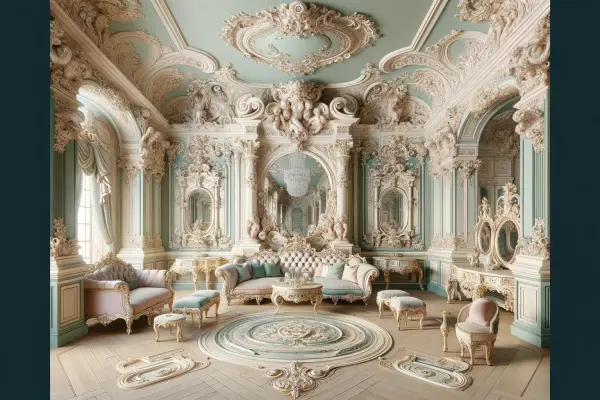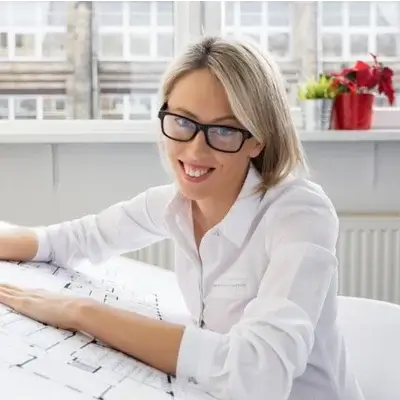Rococo architecture holds a unique place in the history of 18th-century European art. This exquisite and picturesque style emerged in France as an evolution of late Baroque and flourished in the interiors of palaces and aristocratic mansions during the Regency and the reign of Louis XV. Rococo is characterized by its lightness, elegance, and abundance of decorative elements, lending buildings an unparalleled charm.
“Rococo is a style of intimacy and gallant festivities, where architecture creates an ideal setting for the life of 18th-century elite. Its curved lines and decorative asymmetry express a desire for freedom from the strict canons of Baroque, enabling the creation of spaces filled with light and air.” — Germain Boffrand, Rococo-era architect
History of the Rococo Style
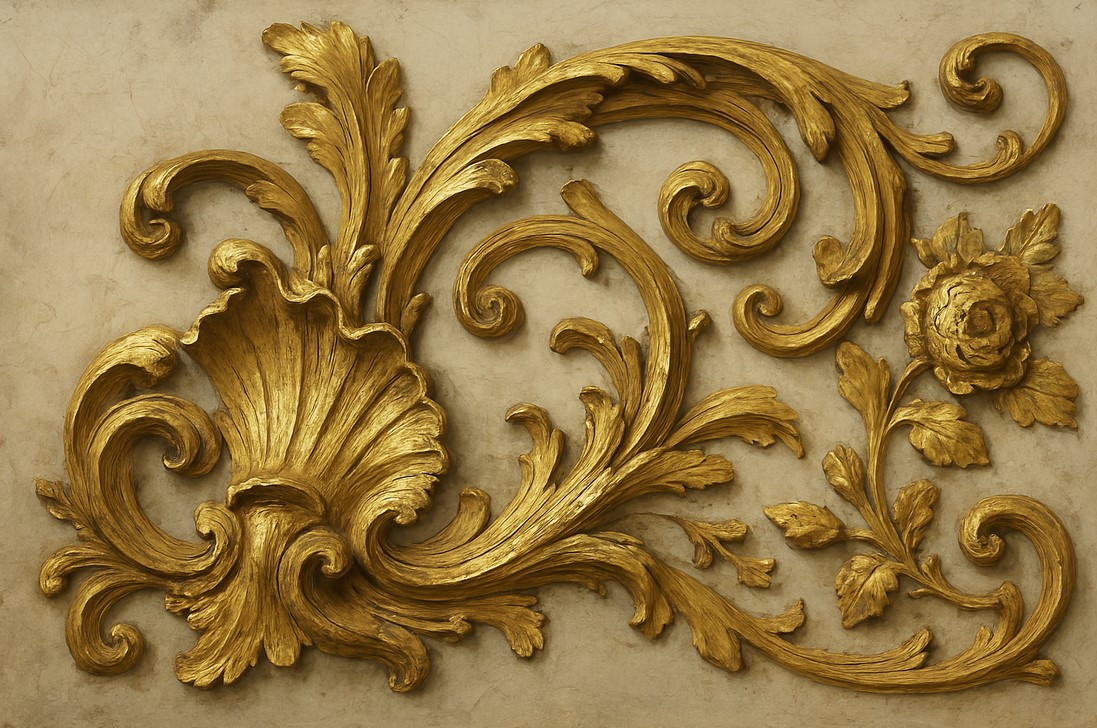 The Rococo style originated in France in the early 18th century and reached its peak in the 1730s–1750s. The name derives from the French word "rocaille," meaning "decorative shell"—a favored motif in the era’s ornaments. Its development was shaped by the aesthetics and tastes of high society. During the Regency and Louis XV’s reign, the aristocracy indulged in refined entertainments, gallantry, and sensuality.
The Rococo style originated in France in the early 18th century and reached its peak in the 1730s–1750s. The name derives from the French word "rocaille," meaning "decorative shell"—a favored motif in the era’s ornaments. Its development was shaped by the aesthetics and tastes of high society. During the Regency and Louis XV’s reign, the aristocracy indulged in refined entertainments, gallantry, and sensuality.
This atmosphere was reflected in the zigzag lines, asymmetrical forms, and profuse decoration of the Rococo style. It contrasted its lightness and grace with the preceding Baroque’s opulence and grandeur. Rococo’s decorative art emphasized an intimate, chamber-like character in interiors, creating spaces for 18th-century musical and reception salons where refined conversations and entertainments took place.
Main Features of Rococo Architecture
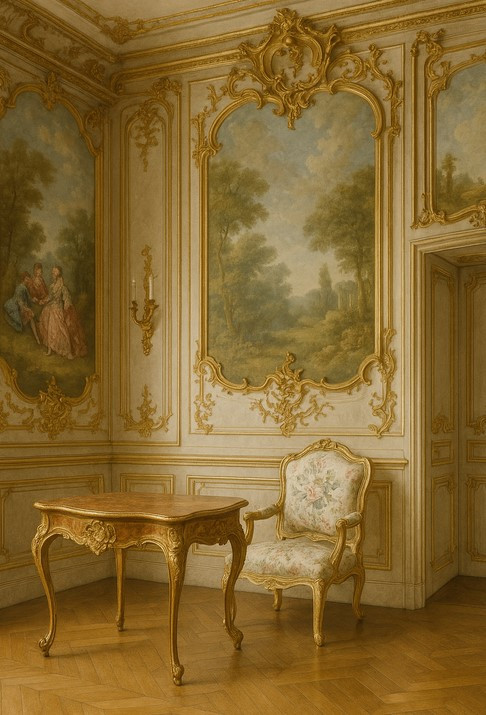 The primary characteristics of Rococo in architecture include decorativeness, asymmetry in ornamentation, and an abundance of plastic embellishments and motifs. Smooth, rounded lines and contours, intricate volutes, decorative shells (rocaille), and rosettes are typical. Interior compositions were guided not by strict architectural principles but by a free, painterly approach.
The primary characteristics of Rococo in architecture include decorativeness, asymmetry in ornamentation, and an abundance of plastic embellishments and motifs. Smooth, rounded lines and contours, intricate volutes, decorative shells (rocaille), and rosettes are typical. Interior compositions were guided not by strict architectural principles but by a free, painterly approach.
Rococo buildings are distinguished by the following traits:
- Refinement of lines, aiming for visual weightlessness in structures
- Abundant stucco and ornamentation with floral, rocaille, and natural motifs
- Prevalence of pastel shades—soft blue, pale green, pink, and beige
- Extensive use of mirrors in interiors to create an illusion of space
- Curved lines as the foundation of architectural composition
Rooms were filled with asymmetrically arranged furniture, niches, and sculptures. Rococo interiors were designed as a unified artistic whole, with frescoes and wall panels crafting an atmosphere of sophistication. Masterful Rococo hall decoration often included ceiling frescoes with illusory perspectives, visually expanding the space.
Differences Between Rococo and Baroque: Comparative Analysis
To better understand the uniqueness of Rococo architecture, it’s essential to distinguish it from Baroque. Though both styles share common roots, they exhibit significant differences in their approach to spatial organization and decoration.
| Characteristic | Rococo Architecture | Baroque Architecture |
|---|---|---|
| Scale | Chamber-like, intimate spaces | Monumentality, grandeur |
| Composition | Asymmetry, free organization | Strict symmetry, orderliness |
| Ornamentation | Rocaille, curved lines, floral motifs | Massive volutes, heavy garlands, sculptural forms |
| Color Palette | Light pastel tones | Contrasting, saturated colors |
| Primary Function | Creating a cozy environment for private life | Displaying power and magnificence |
| Approach to Light | Abundant mirrors, play of reflections, airiness | Dramatic contrasts of light and shadow |
As the table shows, 18th-century Rococo architecture represents a lighter, more playful, and intimate variation compared to the solemn and opulent Baroque of Louis XIV’s era.
Characteristic Elements and Details of Rococo
Typical of 18th-century Rococo architecture are oval or circular niches, Ionic columns, cartouches, garlands, and abundant stucco and ornamentation on walls and ceilings. Architectural solutions often featured entablatures with broken pediments and volute-shaped consoles. Mirrors were widely used in interiors, lending rooms an illusory quality and visually expanding space. Frescoes and wall panels depicting gallant scenes, festivities, and mythological themes played a significant role. Sculptural elements portrayed pastoral scenes—flowers, shells, female figures, and putti (cherub images).
Rococo interior design incorporated the following architectural decor elements:
- Rococo furniture with curved legs and backs, adorned with inlays, bronze, and gilding
- Frescoes and wall panels depicting gallant scenes and bucolic landscapes
- Ornaments featuring interwoven floral motifs, often asymmetrical
- Distinctive stucco with the “rocaille” motif (stylized seashell)
- Park pavilions and small architectural forms in gardens
“In a Rococo interior, nothing is static or monumental. All elements seem to be in motion, flowing into one another, creating the impression that the space itself breathes and dances with its inhabitants. This is architecture crafted for the enjoyment of life.” — Jean-François Blondel, 18th-century architectural theorist
Notable Architects and Rococo Buildings
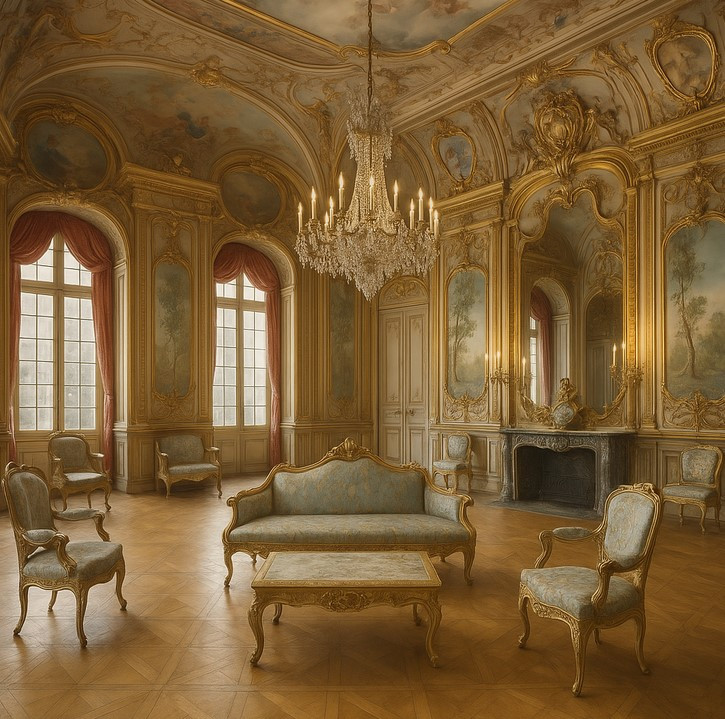 Key French architects working in the Rococo style included Julien-David Leroy, Germain Boffrand, and Jacques-Ange Gabriel. They designed interiors for numerous Rococo palaces, including the royal residences of Versailles.
Key French architects working in the Rococo style included Julien-David Leroy, Germain Boffrand, and Jacques-Ange Gabriel. They designed interiors for numerous Rococo palaces, including the royal residences of Versailles.
Leroy’s masterpiece is the Rococo-style King’s Bedroom in Versailles, with its profusion of gilded stucco, curved lines, and mirrors. Boffrand designed the renowned Oval Cabinet in the same palace, embodying the principles of French decorative tradition. The Palace of Versailles, one of the world’s greatest architectural monuments, showcases a transition from Baroque opulence to refined Rococo in the interior decoration of many halls.
Other notable Rococo structures in France:
- Hôtel de Soubise in Paris—an exemplar of elegance and decorative asymmetry
- Hôtel de Soubise with its famous Oval Salon
- Bishop’s Residence in Chalon-sur-Marne with rich stucco work
- Bellevue Castle near Paris—a benchmark of Rococo architecture
These Rococo buildings were distinguished by their elegance, asymmetrical layouts, and abundant stucco and mirrors, creating an atmosphere of luxury and refinement. Rococo interior design reached its zenith here, with characteristic use of pendentives (curved transitions between walls and ceilings) and painted ceiling panels.
Success Story: Restoration of the Amalienburg Pavilion
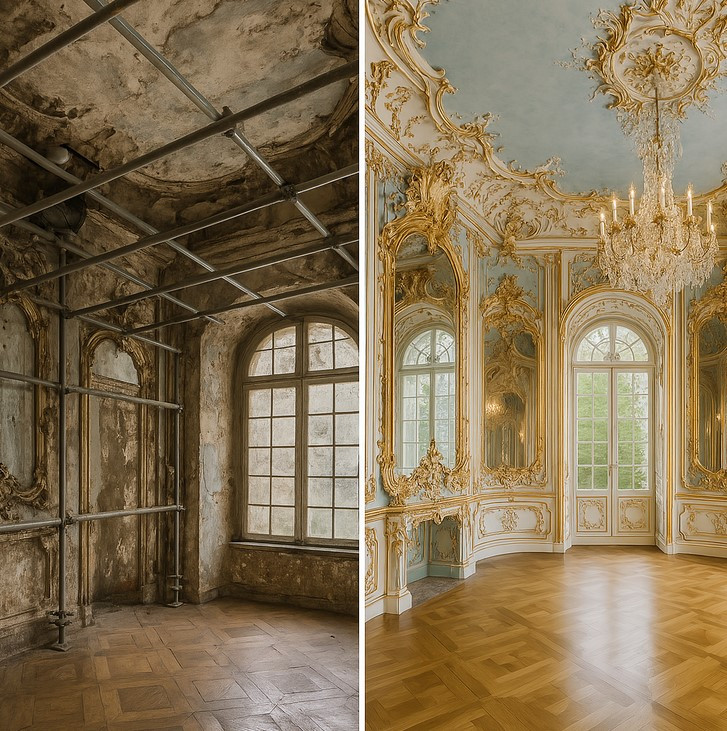 The restoration of the Amalienburg Pavilion in Munich, a gem of German Rococo, deserves special attention. Built by architect François Cuvilliés between 1734 and 1739 as a hunting lodge for Elector Charles Albert and his wife Maria Amalia, the pavilion was damaged during World War II. In the 1980s, a major restoration of Rococo buildings, including this unique monument, began.
The restoration of the Amalienburg Pavilion in Munich, a gem of German Rococo, deserves special attention. Built by architect François Cuvilliés between 1734 and 1739 as a hunting lodge for Elector Charles Albert and his wife Maria Amalia, the pavilion was damaged during World War II. In the 1980s, a major restoration of Rococo buildings, including this unique monument, began.
A team of restorers led by Professor Otto Meitinger meticulously restored original decorative elements—stucco, mirrors, and gilding. Using surviving drawings and photographs, they recreated the renowned Mirror Hall with its unique silver ornaments and mirrors. Such projects require a deep understanding of comprehensive building restoration principles, encompassing both architectural and artistic aspects. Today, the Amalienburg Pavilion is one of Europe’s best-preserved Rococo interiors, attracting thousands of tourists and 18th-century architecture enthusiasts.
Spread of the Style Beyond France
Beyond France, Rococo decorative art spread to Germany, Austria, Italy, and Russia. In each country, the style took on national characteristics while retaining its core features.
In Germany, notable examples include Pillnitz Castle in Dresden with its asymmetrical layout and abundant ornamentation, and the Wieskirche Pilgrimage Church in Bavaria, whose interior is a masterpiece of South German Rococo. This UNESCO World Heritage Site exemplifies “Bavarian Rococo”—vibrant, colorful, and emotive, beautifully preserved in a picturesque Alpine valley. Park pavilions in royal residences, such as Sanssouci in Potsdam, also showcase Rococo-era architecture in light, elegant structures harmoniously integrated into the landscape.
In Italy, Rococo manifested in the decoration of Roman churches and palaces, such as Palazzo Carapezza and Villa Albani. These featured stucco ornaments, curved lines, and sculptures. Italian masters infused Rococo with more classical elements combined with Baroque opulence, as well as Eastern motifs in decor—particularly evident in chinoiserie and turquerie styles.
In Russia, 18th-century architectural Rococo elements are visible in the works of Bartolomeo Rastrelli, who designed the Catherine Palace in Tsarskoye Selo and interiors of the Winter Palace in St. Petersburg. In these masterpieces, the intimacy and domesticity of the European style are uniquely blended with the monumentality of Russian architecture. A classic example of Russian Rococo is the decor of the Great Hall in the Catherine Palace, with its bel étage adorned with panels, pilasters, and dessus-de-portes (decorative panels above doorways).
“Russian Rococo is a remarkable synthesis of European refinement and Russian grandeur. In the hands of masters like Rastrelli, the style gained new vitality, becoming more opulent and colorful while retaining its characteristic playfulness of form and decorative asymmetry.” — Igor Grabar, art historian
Decline of the Style and Influence on Later Eras
From the mid-18th century, neoclassicism as Rococo’s successor gradually displaced the style. Critics like Diderot and Voltaire pointed to Rococo’s excessive decorativeness and departure from classical canons. However, its influence on Rococo-style interior decoration and decorative arts persisted for a long time.
In the 19th century, during historicism, interest in Rococo revived, and in the 20th century, certain elements were incorporated into Art Nouveau and other movements. Today, Rococo furniture and decor remain in demand among enthusiasts of classical style and luxury.
Modern interior specialists often draw on Rococo’s legacy, adapting its elegant forms and decorative motifs to create sophisticated spaces. The restoration of Rococo buildings has also become a significant focus in contemporary architectural practice. For instance, between 2018 and 2022, a major restoration of the rocaille interiors of the Chinese Palace in Oranienbaum (Russia) was completed, where experts revived unique glass beadwork and the authentic 18th-century pastel color palette. The restoration of the Amalienburg Pavilion in Munich has been completed using the latest technologies for preserving historical gilding. Such projects make Rococo-style interior solutions accessible to modern enthusiasts, and by applying the principles of sustainable construction, they help ensure the preservation of heritage sites for future generations.
Conclusion
Rococo’s architectural legacy reflected the refined tastes of 18th-century European aristocracy, becoming a vital chapter in the history of world art. With its elegance of form, decorative asymmetry, and profusion of ornaments, the style created a distinctive aesthetic that influenced the subsequent development of architecture and design. Despite its brief dominance, Rococo left a rich legacy in the form of magnificent Rococo palaces, mansions, and decorative art objects.
Contemporary interest in restoring Rococo buildings and incorporating elements of the style into interior design underscores its value and relevance. Rococo palaces, with their lightness and elegance of line, captivate modern architects and designers. Even in a minimalist era, Rococo elements—curved lines, decorative panels, delicate stucco—find application in Rococo-style interiors to create an atmosphere of refined elegance.
